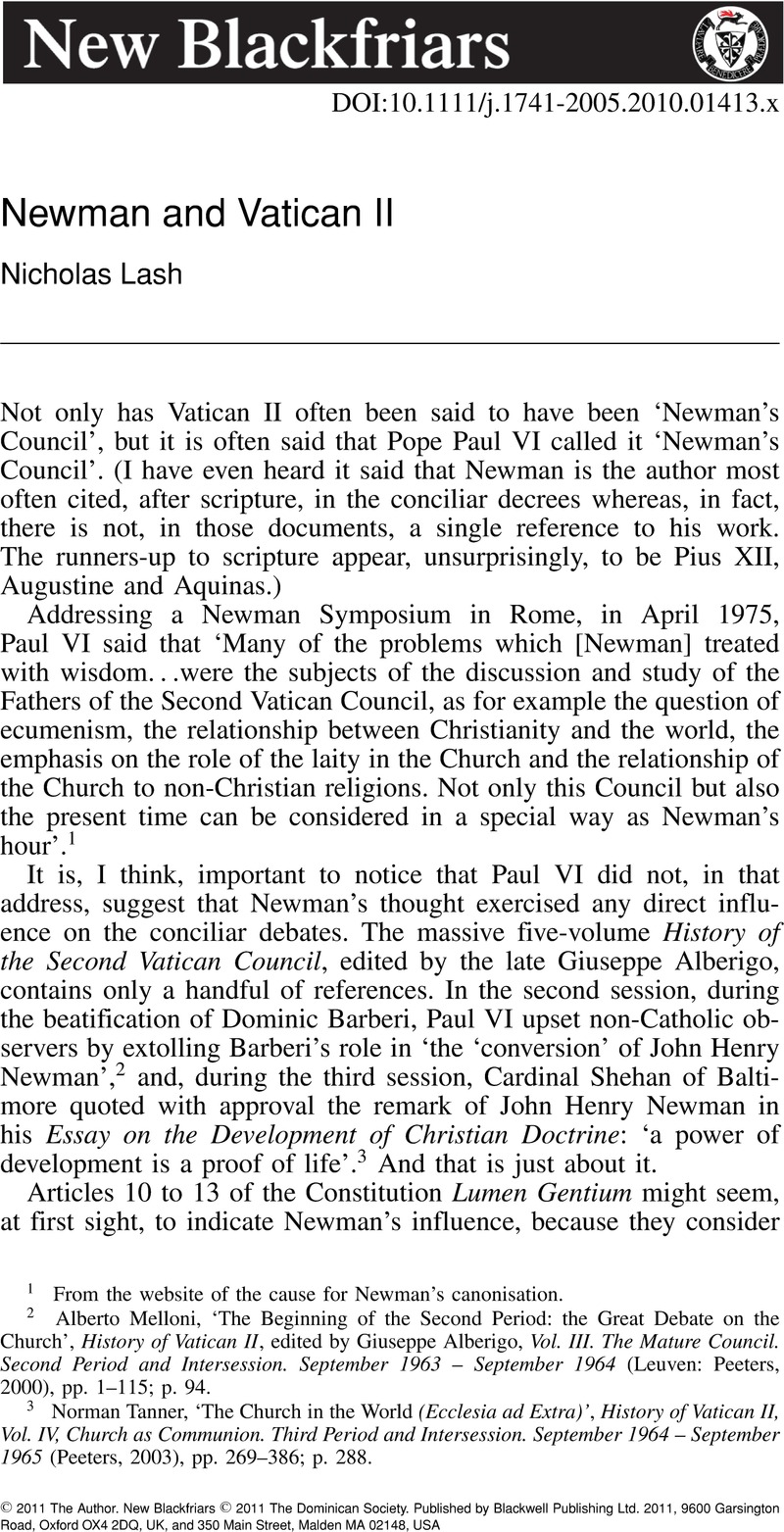No CrossRef data available.

1 From the website of the cause for Newman's canonisation.
2 Alberto Melloni, ‘The Beginning of the Second Period: the Great Debate on the Church’, History of Vatican II, edited by Alberigo, Giuseppe, Vol. III. The Mature Council. Second Period and Intersession. September 1963 – September 1964 (Leuven: Peeters, 2000), pp. 1–115; p. 94Google Scholar.
3 Norman Tanner, ‘The Church in the World (Ecclesia ad Extra)’, History of Vatican II, Vol. IV, Church as Communion. Third Period and Intersession. September 1964 – September 1965 (Peeters, 2003), pp. 269–386; p. 288.
4 See Congar, Yves, ‘Sur la Trilogie “Prophète-Roi-Prêtre”’, Revue des Sciences Philosophiques et Théologiques, 67 (1983), pp. 97–116Google Scholar; p. 107.
5 Lash, ‘Authors, Authority and Authorization’, p. 61.
6 See L’Écclésiologie au xixe Siècle, Unam Sanctam 34 (Paris: Les Editions du Cerf, 1960), pp. 329–349. The essays in this collection first appeared, earlier the same year, as numbers 2, 3 and 4 of the Revue des Sciences Religieuses.
7 Congar's essay ‘Sur la Trilogie’ reviews L. Schick, Das Dreifache Amt Christi und der Kirche (Europäische Hochschulschriften, Reihe XXIII Théologie. Bd 171), published in Frankfurt by Peter Lang in 1982. See Bertulf van Leeuwen's essay on ‘La Participation à la Fonction Prophétique du Christ’, in L’Église de Vatican II, Unam Sanctam 51, edited Guilherme Baraúna, French edition directed by Congar (Paris: Les Éditions du Cerf, 1966), pp. 425–455.
8 He speaks of Newman ‘apportioning’ the offices ‘among different classes (theologians, devout laity, and popes)’: Avery Dulles, ‘The Threefold Office in Newman's Ecclesiology’, Newman after a Hundred Years, edited Ker, Ian and Hill, Alan (Oxford: Clarendon Press, 1990), pp. 375–399; p. 397Google Scholar.
9 Dulles, ‘The Threefold Office’, p. 397.
10 Marin-Sola, F., L’Évolution Homogène du Dogme Catholique, 2 vols (Fribourg, 1924)Google Scholar.
11 ‘Le théologien moderne qui a eu la plus claire vision de l’existence du progrès dogmatique’ (Marin-Sola, Vol. I, p. 310).
12 Chadwick, Owen, From Bossuet to Newman. The Idea of Doctrinal Development (Cambridge: Cambridge University Press), 1957, p. 97Google Scholar.
13 See Lash, Nicholas, Newman on Development (London: Sheed and Ward, 1975), p. 153Google Scholar.
14 Butler, B. C., ‘Newman and the Second Vatican Council’, The Rediscovery of Newman. An Oxford Symposium, edited Coulson, John and Allchin, A. M. (London: Sheed and Ward, 1967), pp. 244–5Google Scholar.